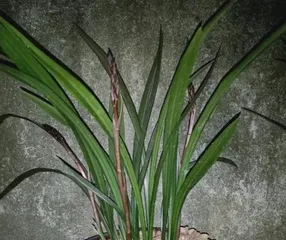Phalaenopsis is an elegant and common flower in daily life, so people pay special attention to its care. During the cultivation process, choosing the right fertilizer can effectively enhance its disease resistance and immunity, making it more lush and healthy. What is the best fertilizer for Phalaenopsis? This article will introduce it to you in detail.

What is Phalaenopsis
Phalaenopsis (scientific name: Phalaenopsis), also known as the butterfly orchid, is a genus of the Orchidaceae family. It grows in humid and shady tropical rainforests and is an evergreen, perennial herb. Phalaenopsis has gorgeous flowers and an elegant posture, earning it the title "Queen of Flowers".
The Nutritional Requirements of Phalaenopsis
The growing environment of Phalaenopsis is quite special. It prefers a warm, humid, well-ventilated, and shaded environment. At the same time, it has high nutritional requirements, mainly including three major elements: nitrogen, phosphorus, and potassium.

Fertilizer Selection for Phalaenopsis
The choice of fertilizer for Phalaenopsis needs to be determined by its nutritional requirements. In general, Phalaenopsis needs organic and inorganic fertilizers to supplement its nutrients.
Choice of Organic Fertilizers
Organic fertilizers are made from raw materials such as animals and plants, through natural decomposition. They mainly include matured organic fertilizers, bird droppings, cow manure, etc. These fertilizers are rich in various trace elements, which can improve soil quality and promote plant growth and development.
Application Method of Organic Fertilizers
When using organic fertilizers for Phalaenopsis, spread the fertilizer on the surface of the potting soil, and then lightly hoe it into the soil. This can avoid damaging the plant's roots. Moreover, the amount of organic fertilizer used should be moderate, otherwise it may easily cause problems such as soil acidification.

Choice of Inorganic Fertilizers
Inorganic fertilizers mainly include urea, superphosphate, potassium sulfate, potassium chloride, etc., and are mainly chemically synthesized. These fertilizers are rich in nutrients and can quickly supplement the plant's nutritional needs.
Application Method of Inorganic Fertilizers
When using inorganic fertilizers, you need to dissolve the fertilizer in water to make a liquid fertilizer, and then evenly pour the liquid fertilizer on the surface of the potting soil. Generally, use it once every 2-3 weeks. The amount used will vary depending on the variety and growth stage of the Phalaenopsis.
Precautions for Fertilizer Selection for Phalaenopsis
Whether using organic or inorganic fertilizers, the following points should be noted: avoid applying fertilizer on rainy days, avoid fertilizing immediately after watering, control the amount used, and ensure the normal growth and development of Phalaenopsis.
How to Determine Which Nutrient Phalaenopsis is Deficient In
To determine which nutrient Phalaenopsis is deficient in, it is mainly done by observing the leaf color and plant morphology. For example, when the leaves of Phalaenopsis turn yellow, it indicates a nitrogen deficiency; when the leaves become deformed, it indicates a phosphorus deficiency; and when the flower buds are difficult to open, it indicates a potassium deficiency.
The Choice of Fertilizer for Phalaenopsis Should Be Determined According to Different Growth Stages
The growth stages of Phalaenopsis are divided into growth period, dormancy period, germination period, flowering period, etc., and the nutritional requirements of each stage are different. When choosing fertilizers, it is necessary to select the corresponding type of fertilizer for different growth stages.
Fertilizer Selection for the Growth Period of Phalaenopsis
During the growth period of Phalaenopsis, a compound fertilizer with a relatively balanced ratio of nitrogen, phosphorus, and potassium should be applied to promote the growth and development of the plant.
Fertilizer Selection for the Dormancy Period of Phalaenopsis
During the dormancy period of Phalaenopsis, due to the slowdown in plant metabolism, the amount of fertilizer should be reduced, and it should mainly be fertilizers with high phosphorus and potassium content.
Fertilizer Selection for the Flowering Period of Phalaenopsis
During the flowering period of Phalaenopsis, fertilizers with high potassium content should be chosen to promote the opening of flowers and improve their quality.
How to Avoid Over-fertilization
Over-fertilization can lead to soil acidification, affecting the healthy growth of Phalaenopsis. During the fertilization process, it is essential to control the amount used to avoid over-fertilization.
In summary, the choice of fertilizer for Phalaenopsis needs to be based on the plant's nutritional requirements and growth stage. At the same time, attention should be paid to the application method and amount of fertilizer to ensure that Phalaenopsis can grow strong and show its beauty and charm.